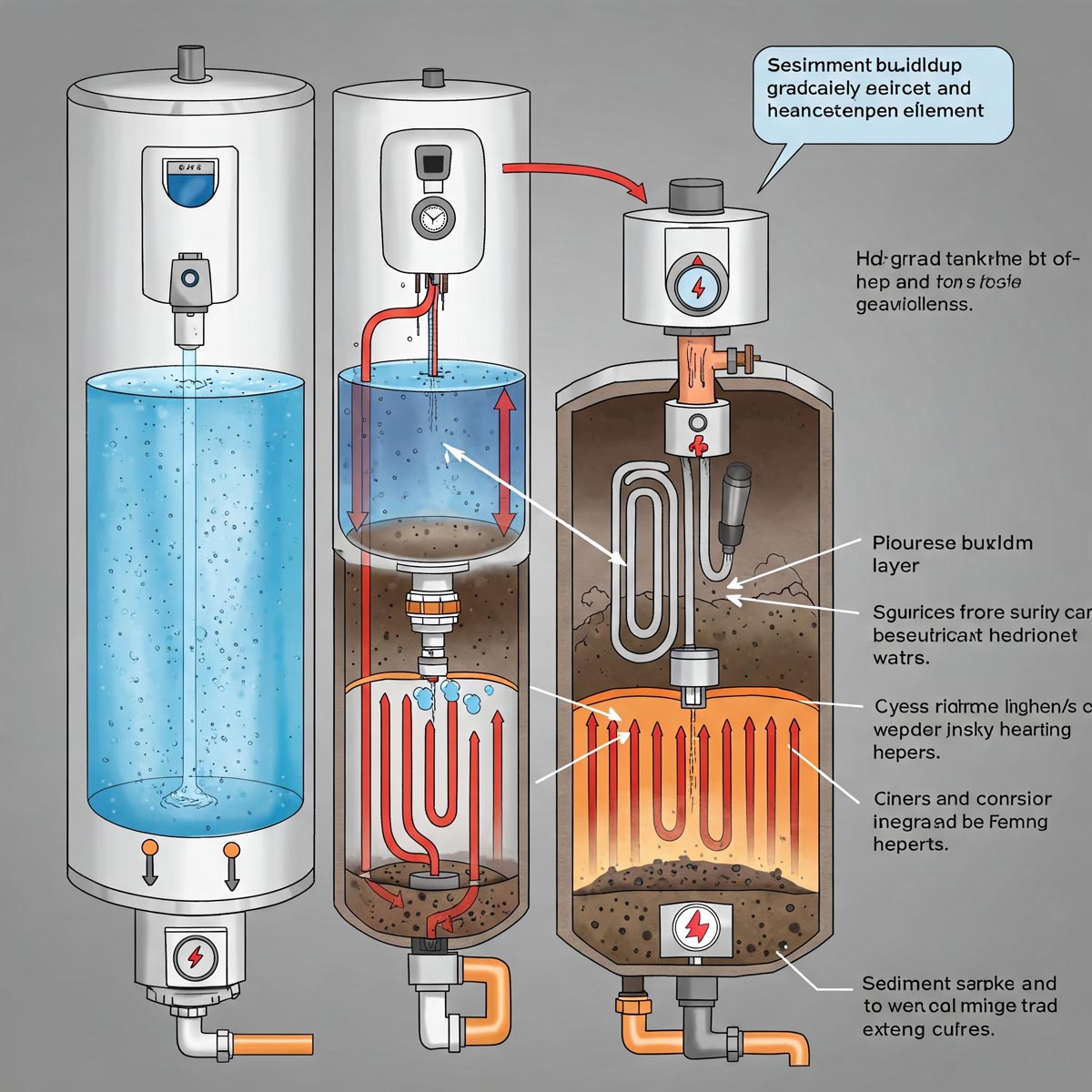Understanding the Hidden Threat in Your Water Heater
When was the last time you thought about what might be lurking inside your water heater? For most homeowners, the answer is probably “never” – at least until something goes wrong. Water heater sediment builds up silently over time, causing a host of problems that can lead to inefficiency, higher utility bills, and even complete system failure. This invisible accumulation represents one of the most common yet overlooked maintenance issues facing homeowners across America.
✨Was this helpful? Spread the word! 🚀
Water heater sediment forms naturally as minerals in your water supply settle at the bottom of your tank. In regions with hard water, this process accelerates dramatically, creating layers of calcium, magnesium, and other mineral deposits that can significantly impact your system’s performance. If you’ve noticed decreased hot water output, unusual noises from your tank, or rising energy bills, water heater sediment may be the culprit.
In this comprehensive guide, we’ll explore everything you need to know about water heater sediment – from understanding what it is and how it forms to learning practical, step-by-step techniques for removal and prevention. Whether you’re a seasoned DIY enthusiast or someone looking to better understand home maintenance, this article will equip you with the knowledge to extend your water heater’s lifespan and improve its efficiency.
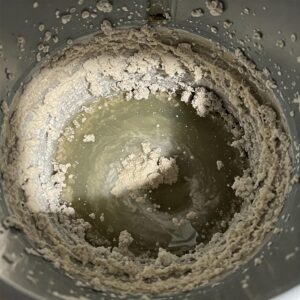
What Is Water Heater Sediment and Why Should You Care?
The Science Behind Water Heater Sediment
Water heater sediment isn’t some mysterious substance – it’s primarily composed of minerals naturally present in your water supply. According to the U.S. Geological Survey, approximately 85% of American homes have hard water, which contains elevated levels of calcium and magnesium. As your water heater operates, these minerals separate from the water and settle at the tank bottom, forming a layer of sediment.
The composition of water heater sediment varies depending on your local water quality. In areas with particularly hard water, sediment accumulation happens more rapidly and can include:
- Calcium carbonate (limestone)
- Magnesium hydroxide
- Sand and other debris
- Rust particles from aging pipes
The heating process accelerates mineral precipitation, which explains why water heaters are particularly vulnerable to sediment buildup compared to other plumbing fixtures. Every time your water heater cycles, more minerals can separate and add to the growing layer at the bottom of the tank.
The Real Cost of Ignoring Sediment Buildup
Many homeowners underestimate the impact of water heater sediment until significant problems develop. Here’s why you should pay attention to this issue:
1. Reduced Energy Efficiency ⚡
When sediment accumulates at the bottom of your tank, it creates an insulating layer between the heating element or burner and the water above. Research published in the Journal of Energy Resources Technology indicates that even a half-inch layer of sediment can reduce heating efficiency by up to 50%. This inefficiency forces your system to work harder and longer to heat water, directly increasing your energy bills.
2. Shortened Lifespan of Your Water Heater 🕒
The average water heater should last 8-12 years, but excessive sediment buildup can cut this lifespan dramatically. The additional strain on heating elements and tank materials accelerates wear and tear, potentially reducing your unit’s functional life by 25-40%. Considering that a new water heater installation typically costs between $1,000-$3,000, proper maintenance represents significant long-term savings.
3. Decreased Hot Water Capacity 🚿
As sediment accumulates, it physically displaces water in your tank. A standard 50-gallon water heater with two inches of sediment might effectively hold only 40-45 gallons, reducing the amount of hot water available for showers, laundry, and other household needs.
4. Unusual Noises and Potential Damage 🔊
That popping or rumbling sound coming from your water heater isn’t normal – it’s often the sound of water bubbling up through layers of sediment. These noises indicate more than an annoyance; they signal increased stress on your tank that can lead to cracks, leaks, or even complete failure.
5. Water Quality Issues 💧
Over time, particles from the sediment layer can mix with your hot water, potentially affecting water clarity, taste, and smell. This contamination may be especially noticeable in drinking water or when filling a bathtub.
Now that we understand the importance of addressing water heater sediment, let’s explore the warning signs that indicate it’s time to take action.
5 Warning Signs Your Water Heater Has Sediment Buildup
Recognizing the symptoms of sediment accumulation early can save you from costly repairs or premature replacement. Here are the key indicators that your water heater is struggling with sediment:
1. Decreasing Hot Water Availability
If you’ve noticed that your hot water doesn’t last as long as it used to, sediment buildup may be reducing your tank’s effective capacity. When family members suddenly need to race through showers or you can’t fill the tub completely with hot water, it’s time to investigate.
2. Strange Noises From Your Tank
✅ Popping and rumbling sounds are classic indicators of sediment buildup in your water heater. These noises occur when water gets trapped beneath the sediment layer and creates steam bubbles that burst through the deposits. The more pronounced these sounds, the more significant your sediment problem likely is.
3. Increasing Energy Bills
Have your utility bills been creeping up without explanation? A research study by the Department of Energy found that water heating accounts for about 18% of home energy use. When sediment reduces your heater’s efficiency, this percentage can climb substantially, showing up as unexplained increases in your monthly bills.
4. Rusty or Discolored Hot Water
❌ Clean hot water should be just that – clean. When you start noticing brownish, rusty, or cloudy hot water coming from your taps, sediment may be mixing with your water supply. This issue is particularly common in older water heaters where sediment has accumulated for years.
5. Longer Heating Recovery Times
Does it seem to take forever for your hot water to replenish after someone takes a shower? As sediment insulates the heating element, your system requires significantly more time to heat new water entering the tank. This extended recovery time directly impacts your daily hot water usage patterns.
If you’re experiencing two or more of these warning signs, it’s likely time to address sediment buildup in your water heater. Let’s explore the most effective methods for tackling this common problem.
7 Proven Methods to Remove Water Heater Sediment
Method 1: The Complete Flush (DIY Approach)
The most thorough DIY solution for removing water heater sediment is a complete tank flush. This process requires some basic tools and about 1-2 hours of your time, but it can dramatically improve your water heater’s performance.
What You’ll Need:
- Garden hose (long enough to reach a drain)
- Bucket
- Protective gloves
- Optional: A.O. Smith Water Heater Drain Valve for replacement if yours is damaged
Step-by-Step Process:
- Safety First: Turn off the power to electric water heaters at the breaker box or set gas water heaters to “pilot” mode.
- Shut Off the Water Supply: Close the cold water inlet valve to prevent new water from entering the tank during the flush.
- Relieve Pressure: Open a hot water faucet in your home to release pressure in the system and allow for proper drainage.
- Connect Your Hose: Attach a garden hose to the drain valve at the bottom of your water heater. Place the other end in a bucket or direct it to a floor drain.
- Drain the Tank: Open the drain valve and allow water to flow out. Initially, this water will likely be cloudy or discolored from sediment.
- Perform the Flush: Once the tank is partially drained, briefly open the cold water inlet valve to stir up remaining sediment, then close it and continue draining. Repeat this process several times until the draining water runs clear.
- Refill and Restart: Close the drain valve, remove the hose, close the hot water faucet in your house, open the cold water inlet valve to refill the tank, and finally restore power to your water heater.
According to plumbing experts, performing this flush twice a year can extend your water heater’s lifespan by up to 50%. However, if your drain valve is old or damaged, you might need to replace it before attempting a flush.
Method 2: Using a Water Heater Sediment Trap
For ongoing prevention rather than one-time removal, installing a sediment trap or filter can significantly reduce buildup over time.
What You’ll Need:
- Rusco Spin-Down Sediment Trapper or similar filtration device
- Pipe wrench or adjustable pliers
- Teflon tape
- Optional: Basic plumbing supplies depending on your setup
Installation Process:
- Identify the cold water line entering your water heater.
- Turn off the water supply and drain a portion of the system to avoid leaks during installation.
- Cut the pipe at an appropriate location (following manufacturer’s guidelines) and install the sediment trap according to the specific product instructions.
- Ensure all connections are tight and properly sealed with Teflon tape.
- Restore water flow and check for leaks.
A quality sediment trap can capture particles as small as 100 microns before they enter your tank, dramatically reducing the rate of sediment accumulation. While this doesn’t remove existing sediment, it’s an excellent preventative measure that works continuously.
Method 3: Periodic Partial Draining
If a complete flush seems too daunting or time-consuming, periodic partial draining offers a middle-ground approach that can still yield benefits.
What You’ll Need:
- Garden hose
- Bucket
- Protective gloves
Process:
- Without turning off power to the water heater, connect a hose to the drain valve and place the other end in a bucket or near a drain.
- Open the valve and drain 2-3 gallons of water from the bottom of the tank, where sediment concentrates.
- Close the valve and disconnect the hose.
While less effective than a complete flush, this 10-minute procedure can be performed monthly to gradually reduce sediment buildup and remove the worst of the accumulation. A study in the Journal of Water Supply: Research and Technology found that even partial draining can remove up to 30% of loose sediment when performed regularly.
Method 4: Commercial Descaling Solutions
Chemical descalers can dissolve mineral deposits within your tank without requiring a complete drain and flush.
What You’ll Need:
- Thornton Water Heater Descaler or similar product (follow manufacturer’s dosage recommendations)
- Access to your water heater’s anode rod opening or inlet
Application Process:
- Turn off your water heater and allow it to cool partially.
- Follow the specific product instructions for introduction into your system (typically through the anode rod opening or cold water inlet after closing the valve).
- Allow the solution to sit for the recommended time (usually 1-2 hours).
- Flush the system according to product instructions.
Descaling solutions use acids or other chemicals to dissolve calcium and magnesium deposits. While effective, they should be used with caution and according to manufacturer specifications. Research indicates that chemical descaling can remove up to 85% of mineral deposits when used correctly, but may require periodic treatments for optimal results.
Method 5: Professional Descaling Service
For heavily sedimented tanks or homeowners uncomfortable with DIY methods, professional descaling services offer a thorough solution.
What to Expect:
- A licensed plumber will assess your water heater’s condition.
- They’ll use specialized equipment for flushing, potentially including high-pressure water jets that can break up stubborn sediment.
- Some services include inspection of heating elements, anodes, and other components during the process.
- The professional may apply commercial-grade descaling agents not available to consumers.
According to the Plumbing-Heating-Cooling Contractors Association, professional descaling typically costs between $150-$300 but can extend water heater life by 3-5 years and improve efficiency by up to 40%. For older heaters with significant buildup, this investment often pays for itself within 1-2 years through energy savings.
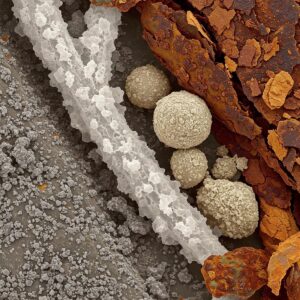
Method 6: Ultrasonic Cleaning Technology
Newer to the residential market, ultrasonic cleaning uses sound waves to break up sediment without chemicals or extensive draining.
How It Works:
- A technician attaches specialized ultrasonic equipment to your water heater.
- The device generates high-frequency sound waves that create microscopic bubbles in the water.
- These bubbles implode against surfaces, creating shockwaves that break apart sediment deposits.
- A partial flush removes the loosened material.
Research published in the International Journal of Advanced Engineering Technology suggests ultrasonic cleaning can remove up to 90% of scale build-up while the tank remains mostly full. While typically a professional service, some DIY ultrasonic cleaning devices have recently entered the market for home use.
Method 7: Water Softener Installation
Rather than repeatedly addressing sediment after it forms, installing a whole-house water softener targets the root cause – mineral-rich hard water.
Benefits for Your Water Heater:
- Water softeners remove calcium and magnesium before water enters your heater, preventing new sediment formation.
- Existing sediment isn’t immediately removed, but no new layers form.
- Overall water heater efficiency improves as the system operates with soft water.
The Water Quality Association notes that homes with water softeners typically see 50% less sediment accumulation in water heaters and a 20-30% reduction in overall energy costs for water heating. While installation requires an initial investment of $1,000-$2,500, the benefits extend throughout your plumbing system, not just to your water heater.
Comparison Table: Water Heater Sediment Removal Methods
| Method | Cost | Time Required | Effectiveness | Difficulty | Best For |
|---|---|---|---|---|---|
| Complete Flush | $0-25 | 1-2 hours | 80-90% | Moderate | Regular maintenance |
| Sediment Trap | $50-150 | 30-60 minutes | Preventative only | Moderate | Ongoing prevention |
| Partial Draining | $0 | 10-15 minutes | 20-30% | Easy | Monthly maintenance |
| Commercial Descaler | $20-50 | 2-3 hours | 70-85% | Easy | Mineral deposits |
| Professional Service | $150-300 | 1-2 hours | 85-95% | No effort (professional) | Heavy buildup |
| Ultrasonic Cleaning | $200-400 | 1-2 hours | 80-90% | No effort (professional) | Stubborn sediment |
| Water Softener | $1,000-2,500 | 3-4 hours | Preventative | Professional installation | Long-term solution |
💬 Just one click – help others make better buying decisions too!😊
🛒 Don’t Wait Until It’s Too Late – Protect Your Investment Today! 🔥
→ Ready to tackle water heater sediment before it causes expensive damage? The products mentioned above can help you maintain your water heater’s efficiency and extend its lifespan significantly. Click on any highlighted product to check current pricing and availability. Remember that a small investment in maintenance today can save hundreds or even thousands in repairs or premature replacement costs! 💰💧
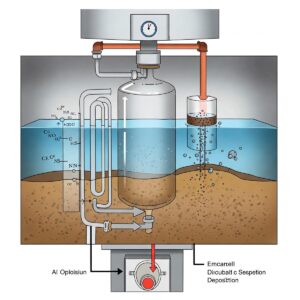
How Often Should You Address Water Heater Sediment?
Maintenance frequency depends largely on your local water hardness and usage patterns. Here’s a general guideline based on water hardness levels:
For Soft Water Regions (0-3.5 grains per gallon):
- Complete tank flush: Once yearly
- Visual inspection: Every 6 months
- Professional service: Every 3-5 years
For Moderately Hard Water (3.5-7 grains per gallon):
- Complete tank flush: Every 6-8 months
- Partial drain: Monthly
- Professional service: Every 2-3 years
For Very Hard Water (7+ grains per gallon):
- Complete tank flush: Every 3-4 months
- Partial drain: Bi-weekly
- Professional service: Annually
- Consider: Water softener installation
You can determine your water hardness by checking your local water quality report or purchasing an inexpensive home test kit. According to the Water Research Foundation, approximately 85% of American homes have moderately hard to very hard water, making regular maintenance crucial for most homeowners.
DIY or Professional? Making the Right Choice
When deciding whether to tackle water heater sediment yourself or call in the professionals, consider these factors:
DIY Advantages:
- Cost savings on service calls
- Immediate action when needed
- Development of useful home maintenance skills
- Regular inspection opportunities to catch other issues
Professional Advantages:
- Expertise in dealing with stubborn sediment
- Access to specialized equipment
- Ability to identify other potential problems
- Warranty protection for newer units
For water heaters under warranty, verify whether DIY maintenance might void your coverage. Some manufacturers specifically require professional service to maintain warranty protection. According to a survey by HomeAdvisor, approximately 60% of homeowners attempt DIY water heater maintenance at least once, but nearly half eventually call professionals for more thorough service.
Essential Tools for DIY Water Heater Maintenance
If you’ve decided to tackle sediment removal yourself, having the right tools on hand makes the job significantly easier:
Basic Tool Kit:
- Craftsman 10-Piece Household Tool Set – includes adjustable wrench, screwdrivers, and pliers essential for accessing drain valves
- Garden hose with brass fittings (min. 6 ft length)
- 5-gallon bucket
- Heavy-duty work gloves
- Flashlight or headlamp for better visibility
Advanced Maintenance:
- Wet/dry vacuum with hose attachment (for stubborn sediment)
- Drain valve replacement kit
- Water pressure gauge
- Non-contact infrared thermometer for checking tank temperature
- Anode rod wrench (specific to your water heater model)
Having these tools readily available not only makes maintenance easier but also encourages regular upkeep, potentially saving thousands in premature replacement costs.
Preventative Measures: Beyond Sediment Removal
While removing existing sediment is important, implementing preventative strategies can dramatically reduce future buildup:
1. Water Softening Options
Water softeners work by replacing calcium and magnesium ions with sodium through an ion exchange process. Beyond traditional salt-based systems, consider:
- Salt-free conditioners: These use template-assisted crystallization to convert minerals into crystals that don’t adhere to surfaces.
- Electronic descalers: These systems use electrical charges to alter mineral behavior without removing them from water.
- Magnetic water treatments: These controversial but increasingly popular devices use magnetic fields to influence mineral crystallization.
A Consumer Reports study found that while traditional salt-based softeners remain most effective, the newer technologies offer viable alternatives for those concerned about sodium in water or environmental impacts.
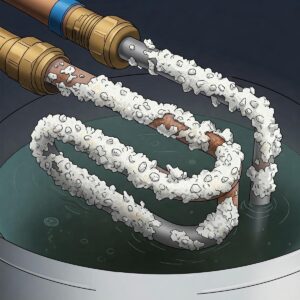
2. Temperature Management
Higher water temperatures accelerate sediment formation. Consider:
- Setting your water heater to 120°F (49°C) rather than the manufacturer’s default of 140°F (60°C)
- Installing a programmable temperature controller for more precise management
- Using a timer to reduce heating during periods of non-use
The Environmental Protection Agency estimates that reducing your water heater temperature from 140°F to 120°F can slow mineral precipitation by up to 40% while also cutting energy costs by 6-10%.
3. Regular Usage Patterns
Believe it or not, how you use your water heater affects sediment buildup:
- Regular water usage helps prevent sediment from compacting
- Vacation modes on newer heaters reduce temperature during extended absences
- Periodic “power flushes” (running hot water at full volume for several minutes) can help dislodge loose sediment
Research indicates that water heaters in homes with consistent daily usage patterns typically develop less compacted sediment than those with irregular use, making them easier to maintain over time.
Understanding Your Water Heater: Types and Sediment Susceptibility
Different water heater designs have varying vulnerabilities to sediment issues:
Traditional Tank Water Heaters
Most susceptible to sediment buildup due to their design. Within this category:
- Gas water heaters: Heat from the bottom, making them particularly vulnerable as sediment directly insulates the heat source
- Electric water heaters: Typically have elements that can become buried in sediment, leading to burnout
- Oil-fired heaters: Less common but extremely vulnerable to efficiency loss from sediment
According to Consumer Reports, gas water heaters typically show a 27% greater efficiency drop from sediment compared to electric models, primarily due to their heating mechanism location.
Tankless Water Heaters
While not immune to sediment, tankless systems face different challenges:
- Mineral scale builds up on heat exchangers rather than accumulating at a tank bottom
- Requires specific descaling procedures, typically using pumps and vinegar solutions
- Many models have built-in sensors that indicate when descaling is needed
The American Council for an Energy-Efficient Economy notes that tankless systems typically require descaling every 12-18 months in hard water areas, with extended intervals in regions with softer water.
Heat Pump Water Heaters
These energy-efficient options have unique considerations:
- Less direct contact between heating elements and water reduces some scaling issues
- Still require regular maintenance for optimal performance
- Often incorporate filtration systems that require periodic cleaning
Understanding your specific water heater type helps you develop the most appropriate maintenance schedule and technique for addressing sediment concerns.
The Environmental Impact of Water Heater Sediment
Beyond personal financial considerations, water heater sediment has broader environmental implications:
Energy Waste
According to the Department of Energy, residential water heating accounts for approximately 400 million tons of CO2 emissions annually in the United States. Sediment-related inefficiency potentially contributes tens of millions of tons to this figure – a significant environmental impact from a preventable problem.
Water Conservation
When sediment forces householders to run water longer while waiting for it to heat, or to replace water heaters prematurely, it contributes to water waste. The Environmental Protection Agency estimates that the average household wastes 10,000 gallons annually through various inefficiencies, with water heating issues contributing significantly to this figure.
Resource Conservation
Manufacturing a new water heater requires substantial resources – steel, copper, insulation materials, and energy for production and transportation. By extending your water heater’s lifespan through proper sediment management, you reduce resource consumption and manufacturing impacts.
Taking care of your water heater through regular sediment maintenance represents environmental stewardship alongside personal financial benefits.
📞 Take Action Now – Your Water Heater Will Thank You! 💦
→ Whether you choose the DIY approach or professional services, addressing water heater sediment is one of the most impactful home maintenance tasks you can perform. The products mentioned throughout this article provide excellent solutions for various budgets and skill levels. Don’t wait until you’re taking cold showers or facing an expensive emergency replacement – implement a sediment management strategy today! 🔧🏡
When to Replace Rather Than Maintain
Despite best efforts at maintenance, every water heater eventually reaches the end of its useful life. Here are signs that replacement might be more appropriate than continued sediment removal:
Age Considerations
The International Association of Certified Home Inspectors provides these general guidelines:
- Gas water heaters: 8-12 years average lifespan
- Electric water heaters: 10-15 years average lifespan
- Tankless systems: 15-20+ years average lifespan
If your unit is approaching these milestones, even with regular maintenance, replacement might be more economical long-term.
Persistent Issues Despite Maintenance
If you’ve performed multiple sediment removal procedures but continue experiencing:
- Inadequate hot water
- Inconsistent temperatures
- Metallic taste or smell in water
- Visible rust in water
- Frequent noise despite flushing
These may indicate internal tank deterioration beyond what sediment removal can address.
Cost-Benefit Analysis
When repair costs approach 50% of replacement value, most experts recommend replacement. Consider:
- Current age vs. expected remaining lifespan
- Energy efficiency gains from newer models
- Available rebates and incentives for high-efficiency replacements
- Ongoing maintenance costs for the current unit
Many utilities offer substantial rebates for energy-efficient replacements, potentially offsetting 10-30% of the cost while significantly reducing operating expenses.
Conclusion: Taking Control of Your Water Heater’s Health
Water heater sediment represents a silent threat to one of your home’s most essential systems, but armed with the knowledge from this guide, you’re now equipped to address it effectively. Whether you choose regular DIY maintenance, professional services, or preventative measures like water softening, taking action will pay dividends through extended equipment life, lower energy bills, and more reliable hot water.
Remember that consistency is key – even the simplest maintenance routine, performed regularly, yields better results than sporadic intensive efforts. Start with an assessment of your current water heater condition, local water hardness, and comfort level with DIY projects, then develop a maintenance schedule that works for your situation.
By making water heater maintenance part of your regular home care routine, you’ll not only save money but also contribute to resource conservation and environmental protection through improved energy efficiency. Your wallet – and your morning shower – will thank you.
🚿 Secure Your Hot Water Supply – Every Drop Counts! 🌊
→ Don’t let sediment silently damage your water heater and increase your utility bills. The products highlighted in this article represent trusted solutions used by professionals and homeowners alike. Click on any highlighted product to ensure you’re prepared to maintain your water heater properly. Remember that preventative maintenance is always less expensive than emergency repairs or replacement! ⚙️👍
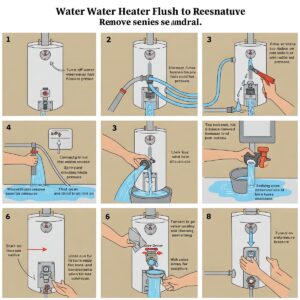
Frequently Asked Questions
❓ How quickly does water heater sediment build up?
✅ Water heater sediment can accumulate at rates varying from 3 months to 2 years depending on water hardness levels... In areas with very hard water (over 10 grains per gallon), noticeable buildup can occur within 3-6 months, while homes with water softeners may go 1-2 years before significant accumulation...
❓ Can water heater sediment make me sick?
✅ While water heater sediment itself rarely causes illness, it can harbor bacteria that might pose health risks... The CDC notes that Legionella bacteria can sometimes grow in sediment-laden water heaters maintained below 120°F, particularly in systems with infrequent use or compromised anode rods...
❓ What happens if I never flush my water heater?
✅ Neglecting water heater flushing typically leads to premature failure and significantly increased operating costs... Most manufacturers estimate a 25-40% reduction in lifespan, up to 50% decrease in efficiency, and eventual issues including burst tanks, failed heating elements, or complete system breakdown requiring emergency replacement...
❓ How much does professional water heater flushing cost?
✅ Professional water heater flushing services typically range from $100-$300 depending on location and tank condition... Most plumbing companies offer tiered service packages, with basic flushing at the lower end and comprehensive maintenance including anode rod inspection, pressure relief valve testing, and warranty protection at higher price points...
❓ Can I install a water softener just for my water heater?
✅ Yes, point-of-use water softeners designed specifically for water heaters are available, typically costing $200-$500... These compact systems install on the cold water line feeding your water heater and require less salt and maintenance than whole-house systems, making them ideal for condos or homes where space is limited...
Recommended for You:
- 10 Best Water Heater Storage Tank Options For Ultimate Efficiency in 2025
- Water Heater Water Valve: Complete Guide for Homeowners in 2025
- 10 Best Window Mounted Heat Pump Options For Year-Round Comfort in 2025
Disclaimer: This article contains affiliate links. If you purchase products through these links, we may earn a small commission at no additional cost to you.
✨ Found this helpful? Share it with your friends! 💬🤗

